Managing Volunteers in Times of Disaster: The Local Volunteer Coordinator’s Role
“After a disaster, volunteers are the lifelines to our communities. It is impossible for the state and federal government to meet all of the needs of our citizens after a disaster. Volunteer agencies and individuals are an integral part of our response. It is my intent to work closely with volunteer organizations and EMA directors to ensure all 82 counties and the Mississippi Band of Choctaw Indians integrate volunteers into their disaster plans. Doing so before an event ensures our citizens’ unmet needs are addressed as quickly as possible after disaster strikes.”
Lee Smithson
Executive Director
Mississippi Emergency Management Agency
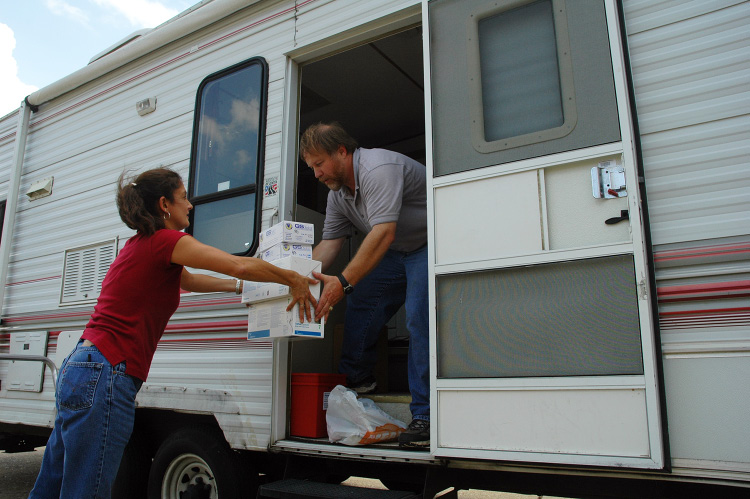
Extension and Volunteer Coordination
Extension personnel can be valuable resources for the state and its communities in the response and recovery process following a disaster, especially in the area of volunteer coordination. In fact, management of volunteers is one of the core competencies for Extension professionals with 4-H responsibilities. However, managing volunteers during the response and recovery process after a disaster requires specialized training.
Volunteer Organizations Active in Disasters
There are a variety of volunteer organizations active in disasters (VOADs) that provide volunteers and volunteer-management assistance post-disaster. They include community-based groups, as well as nationally and internationally recognized nongovernmental organizations (NGOs). Faith-based organizations are known for their ability to quickly provide numerous volunteers immediately after a disaster. VOADs are a huge asset to the volunteer coordinator because they provide tactical support to “the boots on the ground.”
State Government Organizations
Community colleges and universities often send in faculty, staff, and student volunteers. These event-like activities are usually short-lived and bring with them local or regional media coverage. Long-term support from higher education institutions or affiliated government agencies and departments generally comes from physical plant or facilities maintenance departments, animal and natural resources or livestock programs, and Extension personnel. Colleges and universities provide a highly skilled volunteer force that can be extremely useful as managers or laborers. The Mississippi Emergency Management Agency coordinates many VOADs at the state emergency operations center and supports and organizes response and recovery efforts.
Volunteer Roles in Disaster Recovery
Mississippians are generous when it comes to helping those in need, and they naturally show up to provide assistance following a disaster. Weekends, when many people are off work, usually have the highest number of local and state volunteers. The major concern with volunteerism after a disaster is the hands-on management and organization of all the volunteers. An important first step for a volunteer coordinator is to establish an on-site disaster phone system and publicize contact numbers. This system provides an initial point of contact for volunteers and gives the coordinator a wealth of solid information on incoming volunteers.
Volunteers are key to many aspects of a standard disaster management structure organized under the Incident Command System (ICS). They help reestablish infrastructure by clearing and sorting debris; establish and operate points of distribution (PODs) by organizing, inventorying, loading, and unloading supplies; and organize long-term recovery by helping renovate, restore, and—when necessary—rebuild homes. Volunteers also manage and sort donated goods and food; organize transportation for volunteers or affected individuals; and deliver supplies to those impacted by the disaster.
The Volunteer Coordinator’s Responsibility
The volunteer coordinator’s job is to manage the volunteer groups, coordinate within the Incident Command System, coordinate with county and state emergency operations centers, attend operational period briefings and situation report meetings, and coordinate with the various volunteer groups and nongovernmental organizations that are there to help. The volunteer coordinator must communicate and work with representatives from all points of distribution, animal shelters, human shelters, the disaster phone information system, and others to ensure the efficiency and effectiveness of the operation, as well as the safety of all involved.
The volunteer coordinator ensures that all volunteers are briefed, tracked, and maintained throughout their work period. He or she coordinates with local emergency management representatives to share information about volunteer operations. The coordinator may also begin or continue updating a system for keeping up with all paperwork pertaining to volunteer activities. The volunteer coordinator matches volunteers with specific training and skills with appropriate work assignments.
Deployment
Deployments generally are no more than 14 days but can be as brief as a day or even a few hours. There is always the possibility of an extension or a later redeployment. The length of a deployment is left up to the requesting authority, which is almost always officials from the county or counties where the disaster occurred. Volunteers should not remain on-site past the time they are effective or necessary to the response or recovery operation.
Tracking Resources
Documenting and recording information is essential to volunteer coordination. Local governments and jurisdictions have many ways to capture information. There is no need to alter the process or create another system if one is already in place. Simple, routine recording works well. One of the most important things is having a sign-in process for all volunteers. The ICS 211 Check-in Form is a good option.
Once volunteers are enrolled at the volunteer reception center, you will need to note their abilities and what resources they brought with them. Then the volunteer coordinator or responsible manager can assign them a task. You can use the ICS 214 Activity Log Form for this. The key items to record are the date, time (24-hour or military time), actions taken, accidents that may have occurred, and any agreements that may have been made.

Tracking Value
Volunteer hours count toward the overall dollar figure that the local government is responsible for matching to help “earn” federal disaster dollars. Typically, for a presidentially declared disaster, the federal government will pay half or more of the costs associated with the impact of the incident. In Mississippi, the state historically has matched the remaining amount after federal dollars are credited in the recovery, and funds from the local government are used to complete the cost of disaster response and recovery.
No matter the amount or percentage of any federal funds contributed to the response and recovery effort, the hours worked by volunteers can count toward the share the state or local government would be responsible for paying.
Training
Volunteer coordinators must complete a variety of training requirements to hold the position within the Incident Command System. The Incident Command System 100, 200, and 700 courses are required for any deployment across assigned jurisdictional lines. These courses are taught by the MSU Extension Center for Government and Community Development, Mississippi Emergency Management Agency, Mississippi State Department of Health, and Mississippi State Fire Academy. Additional courses available include G-288 Local Volunteer and Donations Management and G-489 Management of Spontaneous Volunteers in Disasters. FEMA also has additional online courses that can provide guidance. These courses are on the Emergency Management Institute’s website, which can be linked from FEMA.gov.
Determining When Volunteer Coordination Begins
The best source of information about volunteer coordination can be found in the impacted county’s comprehensive emergency management plan. This plan lists the triggers for volunteer coordination. Included are pre-identified locations for the volunteer reception center and donation points of distribution, and VOAD information. The county’s comprehensive emergency management plan offers a starting point as to how and when all aspects of emergency management will be coordinated.
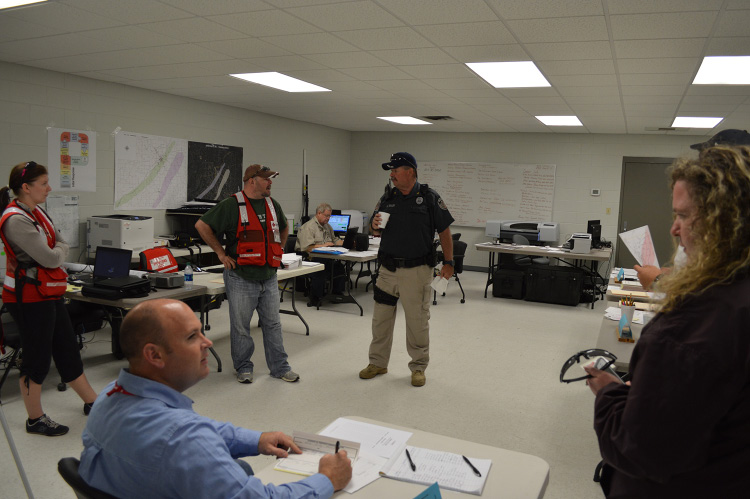
Information Gathering and Sharing
Communication is key to gathering and sharing information at an incident. It is crucial that a disaster phone number be established early and staffed around the clock. This disaster phone system provides the volunteer coordinator with advanced knowledge of incoming volunteer groups and VOADs.
The volunteer coordinator must maintain a list with contact names and organizational structure for all VOADs working the disaster. Also, track volunteers by having them sign in upon arrival at the volunteer reception center. Share volunteer information with the county emergency operations center (EOC) and emergency manager. The volunteer coordinator should coordinate all actions and agreements and monitor, record, and report all work-related accidents to the county EOC during the operational period briefing and other meetings at the EOC.
The Emergency Support Function 6 for VOADs at the state emergency operations center can be a valuable source of information. The volunteer coordinator should also work with the volunteer response system (off site). This will be a source of information on incoming volunteers. Other possible contacts are volunteer organizations at nearby universities or community colleges.
It is important for the volunteer coordinator to keep a copy of the paperwork signed by volunteers working with the different VOADs when they arrive on-site. This information should be shared with the county emergency operations center so they can identify any liability concerns.
It is also important to identify the capabilities of volunteers. Some may be great for debris removal work, while others may prefer to work with animals at the animal shelter or in one the points of distribution for donations. Everyone is not good at everything. Find the strengths of those around you and match them to the needs out in the field.
Requests for Supplies
Resources are always needed in disasters. An example of a resource request would be gloves needed by volunteers in order to accomplish their work assignments. This is a work safety and job efficiency concern. The volunteer coordinator will work with the logistics section chief at the emergency operations center to request any resources needed. Don’t be afraid to think outside the box. Often after a disaster strikes, local businesses want to help, and, in the example of work gloves, a local store or factory might donate the required items. All of this should be coordinated with the logistics section chief at the emergency operations center regardless of whether the needed tools are government-issued or donated. Items often needed for volunteers include safety helmets or hats, safety glasses, sunscreen, insect repellent, and high-visibility clothing.
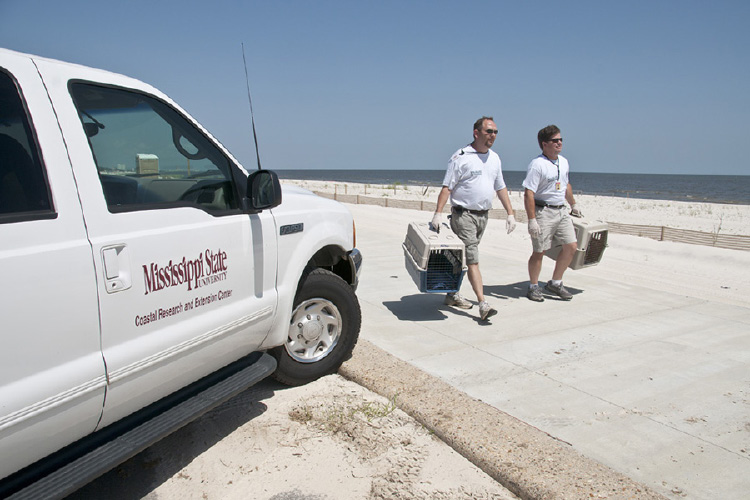
Safety Officer
Safety is always the most important part of any incident response. The safety officer uses OSHA guidelines to ensure that the work sites are safe by identifying any hazards and determining ways to prevent dangerous situations or environments. The safety message provided in the incident action plan is the best source of information on how all workers at the incident should protect themselves. The VOADs must pass this information to the volunteers during a safety briefing before they report to their work areas.
Planning Ahead
Planning ahead can solve a lot of issues before they become headaches, so it is important for the volunteer coordinator to take into account the number and kind of volunteers that may be coming to help throughout the response. Generally after a disaster, there will be a big influx of volunteers on Saturdays and Sundays. Knowing this ahead of time and coordinating this with the EOC can be helpful, especially if there is going to be a big change to traffic. The EOC may need a traffic plan to ensure the safety of those arriving to volunteer. The disaster phone system should be used to gather information on the number and arrival times of incoming volunteers. This information will help determine which VOAD or work group to send them to when they arrive.
Public Information Officer
It is important to coordinate with the public information officer early on to let the public know that a disaster phone number for donations and volunteering has been established, the type of skills needed, and where the volunteer reception center is located. Additional information may need to be sent out about the type of clothing and safety equipment needed in work areas.
Self-Deployed Volunteers
Accounting for self-deployed volunteers is another role of the volunteer coordinator. All volunteers in the response area should be accounted for using the proper paperwork. They also need to be informed about the registration process, mission assignments, and the reporting process.
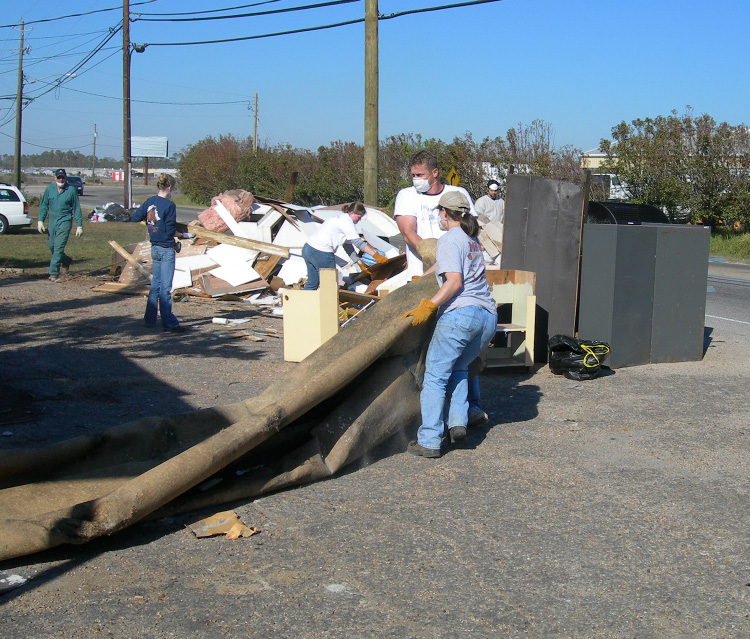
Solutions to Common Problems
- Whenever possible, separate the volunteer reception center and the donations management point of distribution. This will avoid creating a high-traffic area that could potentially pose a hazard for pedestrians.
- Be aware that there is a potential for criminals and others to volunteer so they can take advantage of evacuees or even those working to aid the community residents displaced by the incident. Don’t allow those hurt by the disaster to become victims again.
- It is usually a good idea to make sure the volunteer groups are not too close together during their “down time.” When in doubt about relations among volunteer groups, reach out to the emergency manager and local emergency operations center representative for help in heading off or resolving any issues. No one wants to have a bad experience while volunteering to help those affected by a disaster.
- Watch for signs that a group has been in the field too long. Working in disaster situations can be stressful for volunteers. If possible, provide on-site counseling. Also, give volunteers the option of returning home early with the possibility of returning to volunteer at a later date.
- Volunteer numbers may need to be adjusted later in the recovery process to avoid problems that can arise if groups don’t have enough to do.
- When challenging situations arise, ask yourself, “Why is this happening?” If you find the source of the problem, it is much easier to fix. It is important to get to the root cause in order to provide a lasting solution.
- The position of volunteer coordinator is stressful but rewarding. Just remember, you are never alone in working through the disaster. Help is available from all levels of the incident command structure. Good luck and best wishes in your endeavors.
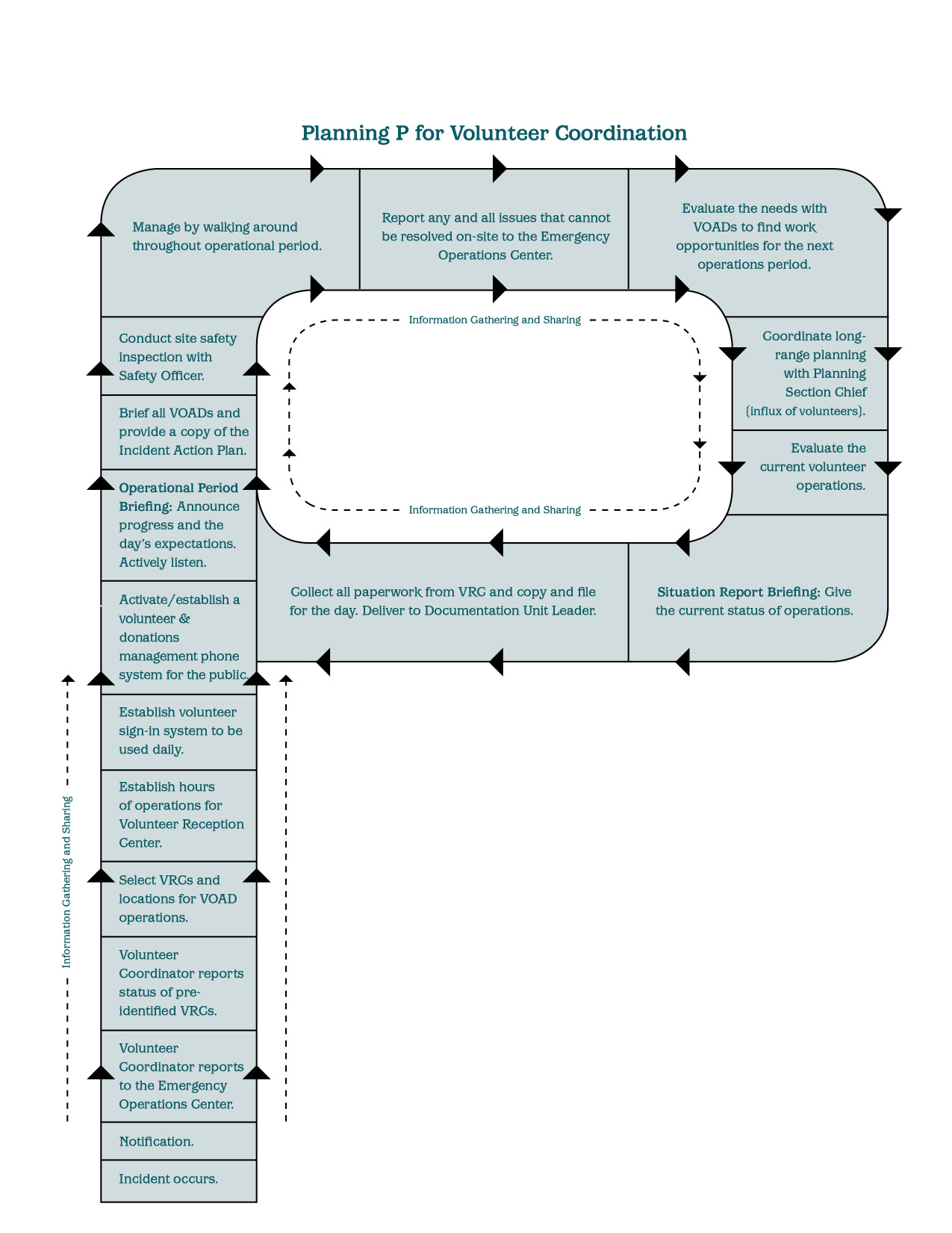
The Mississippi State University Extension Service is working to ensure all web content is accessible to all users. If you need assistance accessing any of our content, please email the webteam or call 662-325-2262.



